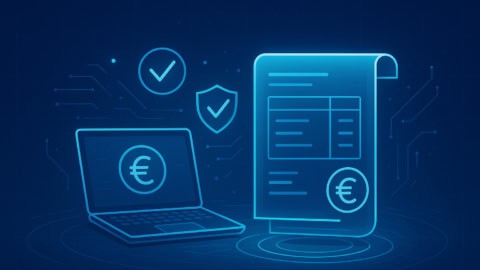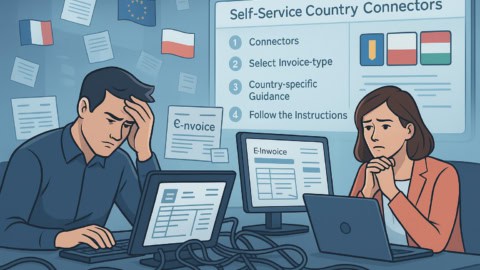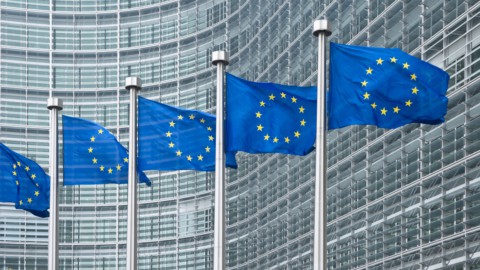At the end of 2020 a new budget law for 2021 was passed by authorities in Italy which proposed changes to Italian tax reporting, including the discontinuation of Esterometro at the end of 2021. The deadline has now been moved: from July 2022 all transactions – including those with foreign partners – must be sent to Sistema di Interscambio (SdI).
What are Sistema di Interscambio (SdI) and Esterometro?
Sistema di Interscambio (SdI) is the official invoice exchange platform of the Republic of Italy. Since 1 January 2019 Italian businesses have been required to send invoices on all transactions (whether B2C, B2B or B2G) via SdI. This data is then validated according to the official rules of the Agenzia delle Entrate (the Italian Revenue Agency). Valid invoices are transmitted to the intended recipient. Invalid invoices are rejected and the sender is informed by the SdI. Thus, the Republic of Italy imposes a dual requirement on businesses: they must send electronic invoices via the SdI and they must receive all invoices via the SdI. Otherwise an invoice does not exist from a tax legal perspective. Consequently all other invoice formats like paper, PDF, fax etc. are not accepted any more in Italy.
As SdI was not initially able to process invoices concerning cross-border transactions, the Esterometro tax scheme was set up in 2019 to cover those invoices. Under the Esterometro scheme, VAT registered businesses in Italy were required to report sales and purchase invoices to or from foreign businesses and non-established businesses to the Agenzia delle Entrate quarterly. Typical transactions on these invoices included intra-community acquisitions and imports / exports.
What are the requirements moving forward?
As Esterometro is to be discontinued from July 2022 and SdI is now able to receive all invoices – including those involving foreign partners – there are new rules concerning the reporting of cross-border invoices, both inbound and outbound:
Outbound invoices
From July 2022 all outbound invoices to non-Italian partners must be sent to the SdI system. Submission must take place within the issuing period of the invoice (typically immediately, as with regular invoices to Italian customers).
Technical considerations
- As non-Italian partners do not have a recipient code (Codice Destinatario), “XXXXXXX” should be used instead
- Cross-border outbound invoices use regular document type (TipoDocumento) codes just like Italian SdI invoices – e.g. TD01 (regular invoice) or TD04 (credit note)
- If a postcode (CAP) does not fit the five digit Italian model (e.g. Switzerland has four digit postcodes, the UK has letters and digits, etc.), “00000” should be used instead
Inbound invoices
From July 2022 every invoice received from a non-Italian partner must be sent to the SdI as well. Copies must be submitted before the 15th day of the month following the transaction date. Thus, the customer receiving the invoice from a supplier abroad registers two invoices in their ERP system – one inbound invoice (as was the case until now) and one outbound invoice, where the data of the inbound invoice is communicated to the SdI.
As was the case previously, businesses must also submit a quarterly report for all invoices until the end 2021.
Technical considerations
- The report of a received invoice is done using an autofattura (self invoice), which is also referred to as integration document.
- The document contains just one invoice line item, where the invoiced line items of the supplier are condensed to one line item.
- For tax amount, the tax from the original invoice should be used (usually the tax is zero anyway for cross-border transactions)
- The destination code (codice destinatario) to be used is “0000000“.
- If a postcode (CAP) is not five digits “00000” should be used
- Document type (TipoDocumento) examples [non exhaustive list]:
- Purchase of services from abroad: TD17
- If a service is purchased by an Italian company from a company abroad (e.g. Germany) and an invoice has been received for this service, this invoice must be submitted to the SdI system as well – by the Italian party receiving the invoice.
- The supplier (AKA “CedentePrestatore” or “C/P”) field should be filled with the data of the party issuing the reverse charge invoice. In the example above, this is the German supplier.
- The customer (AKA “CessionarioCommittente” or “C/C”) field should be completed with the data of the party receiving the reverse charge invoice. In the example above, this is the Italian customer.
- In the field 2.1.1.3 <Data> the date of receipt of the original reverse charge invoice must be provided.
- Taxable amounts should be provided as they are sent by the supplier. The related tax should be provided as it is calculated by the customer, who receives the invoice on a reverse-charge basis.
- In field 2.1.6. (referenced invoices) the number of the original invoice sent by the supplier should be provided. If available the SdI ID number shall be provided as well.
- In field 2.1.1.4 a distinct number should be provided. It is advisable to make use of an automated number range here, ensuring that unique and consecutive numbers are provided.
- Intra-community acquisition of goods: TD18
- If goods are purchased by an Italian company from a company abroad (e.g. Germany) and an invoice has been received for these goods, this invoice must be submitted to the SdI system as well – by the Italian party receiving the invoice.
- Regarding field values, the same principles as for TD17 apply.
- Other purchases of goods from foreign vendors: TD19
- If goods are purchased by an Italian company from a company abroad (e.g. Germany) and these goods are already present in Italy and an invoice has been received for these goods, this invoice must be submitted to the SdI system as well – by the Italian party receiving the invoice.
- Regarding field values, the same principles as for TD17 apply.
- Purchase of services from abroad: TD17
How to deal with inbound credit notes
Should an Italian company receive a reverse-charge credit note from a foreign supplier which corrects a previously sent invoice, the credit note must also be submitted to the SdI. In this case document type TD04 should not be used. Instead, one should use the document type with which the original invoice (which the credit note cancels) was submitted – either TD16 (for internal reverse charge in Italy), TD17, TD18 or TD19. It is important that the amounts are provided with a negative sign.
Exemptions
The only exemptions are invoices which have been submitted to the SdI already or those which have already been registered using a customs declaration (though the invoice can still be sent to SdI as well in this case).
When can I start submitting cross-border transactions to Sistema di Interscambio (SdI)?
Businesses can already report cross-border payments through SDI thanks to a recent update (FatturaPA version 1.6.1). This will become mandatory in July 2022.
How do I report cross-border transactions via Sistema di Interscambio (SdI)?
The process for reporting cross-border transactions will be the same as reporting transactions with other Italian VAT registered businesses.
For more information on sending invoices with FatturaPA via SdI, see our blog post here.
What is the penalty for non-compliance under the new rules?
As with Esterometro reporting, each missed invoice will carry a €2 penalty, this time up to a maximum of €400 per month.
Are non-residents required to do anything?
No. If you are not an Italian taxpayer the rules do not apply to you. The rules do apply to you, however, if you are a provider or supplier who is registered in Italy or a domestic Italian company with a VAT-ID.
Will there be more changes in future?
Yes! While it may not be possible to say what these changes might be, it is certain that e-invoicing rules and regulations will change over time. This is just as true elsewhere in Europe too. As more and more countries move towards a continuous transaction control (CTC) model, further changes to national e-invoicing regulations are inevitable.
How can I stay compliant?
Given the number of new e-invoicing regulations and the speed at which they are being introduced by countries, keeping track of what your business needs to do and adapting internal processes accordingly can be difficult. The most sensible option to ensure ongoing compliance and successful B2B message exchange is to enlist the help of an experienced e-invoicing solution provider such as ecosio.
How ecosio can help
At ecosio we make e-invoicing via Sistema di Interscambio easy. As part of our fully managed solution we offer deep integration in your ERP system (e.g. SAP ERP or SAP S/4HANA). All you need to do is export received and booked accounts payable invoices to us (via your existing ERP user interface); we then take care of submitting them in the right format etc. to SdI.
This upcoming change to the Italian system is just one example of how legal developments can impact daily B2B processes. As we understand the importance of streamlined e-invoicing and the frustrations and risks of constantly having to adapt internal processes, at ecosio we safeguard your automated message exchange by taking care of all EDI and e-invoicing tasks. In short, we handle everything so you don’t have to.
To find out more about our fully managed solution and how you can futureproof your e-invoicing processes, get in touch today!















